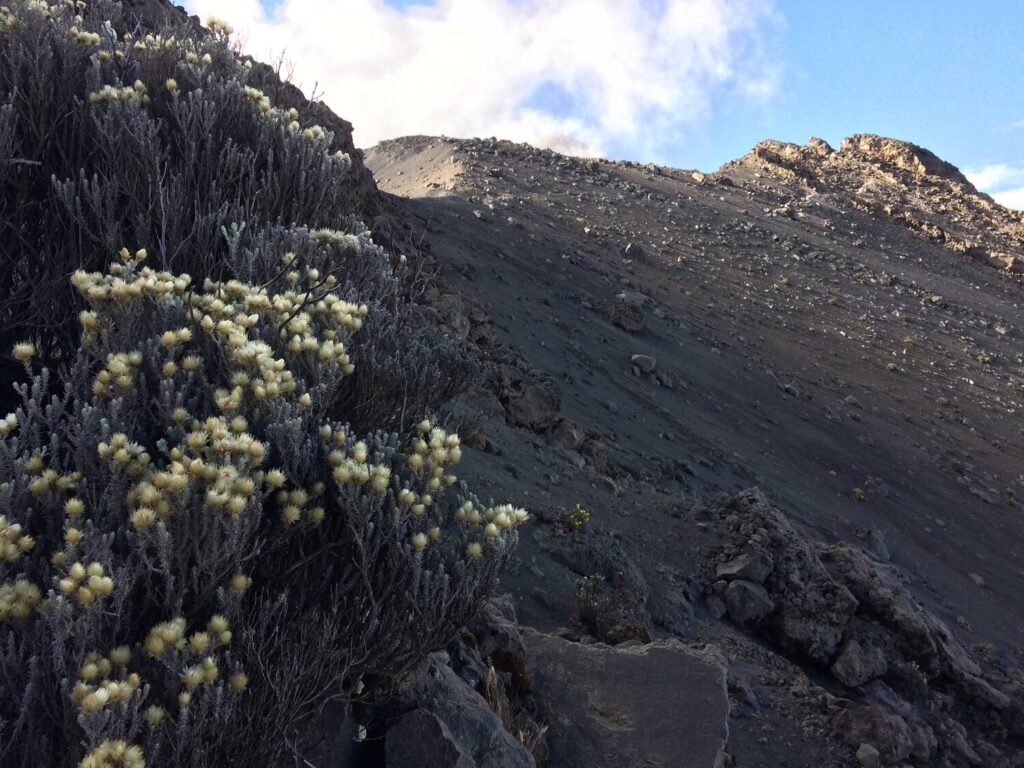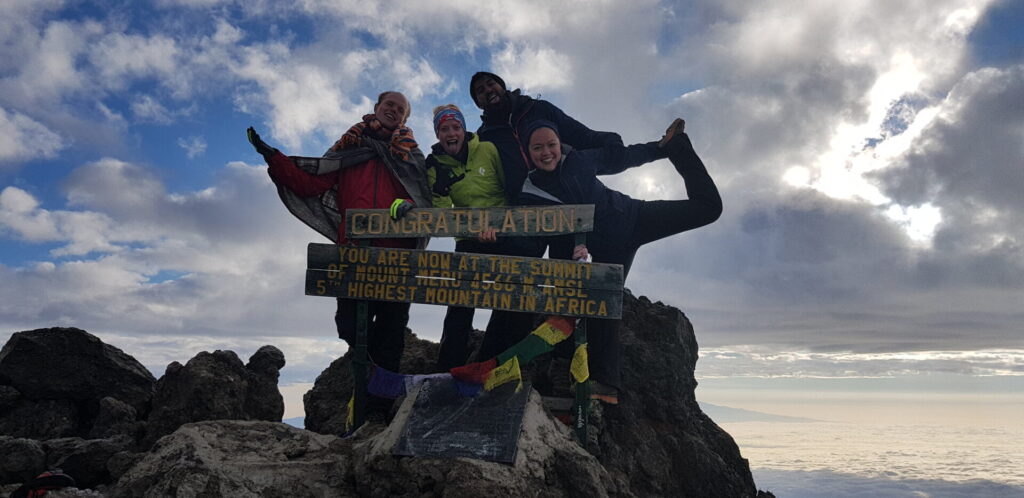Home Story Acts of God or Whatsoever
Acts of God or Whatsoever
Feature type Story
Read time 9 min read
Published Apr 01, 2021
Author Adam Boggon
Photographer Mirjam van den Boom
Story | Adam Boggon Photography | Mirjam van den Boom & Marina Vincent
A dormant stratovolcano, Mount Meru, the Black Mountain of Tanzania, is 4562 metres high and punishes infirmity without hesitancy, leniency or remorse. First piece of advice to those intending to climb: avoid doing so midway through a roiling bout of gastroenteritis.
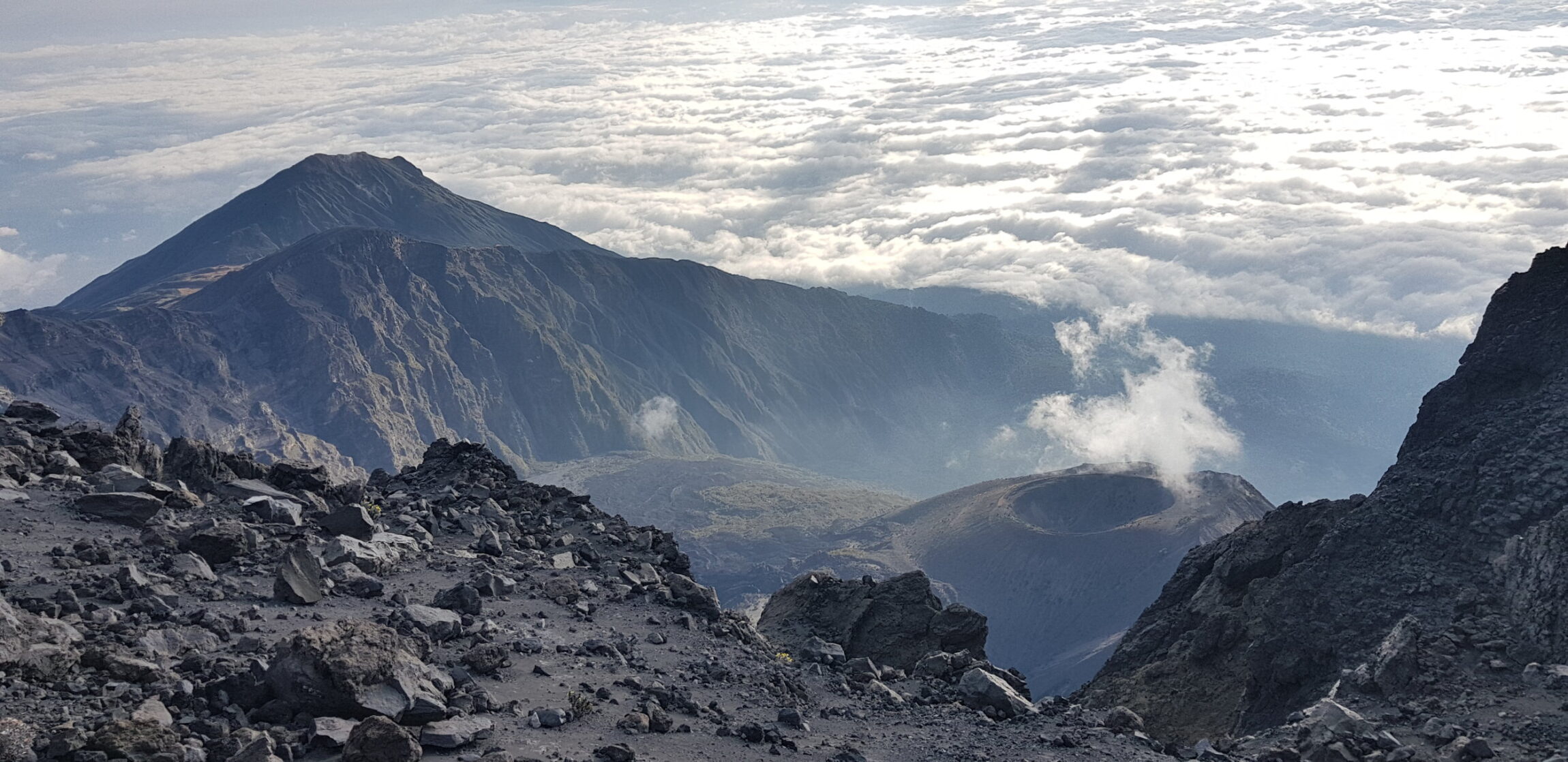
We traced the source of the outbreak to a glass of fruit juice taken in Moshi the day before the hike. Sanitation conditions in our accommodation may also have contributed. We had access to Project House, the former German Ambassador’s residence on the edge of town. I had been installed as batman for seventy-two doctors on our tropical medicine course while the programme director was back in London and was responsible for ensuring safe passage of physicians and materiel across the Kenyan and Ugandan borders to Kampala. I was happy to expand my remit to high muck-a-muck for baggage but on the morning of our arrival the water pump broke and my role was expanded to cover water and sanitation.
Our principal fixer, Francis, couldn’t mend it. Kevin, an MSF doctor from Baltimore who declared an interest in plumbing also made no headway. We made the landlady aware of the issue and she made us aware that her engineer was at the coast with no fixed plan to come back.
We devised an interim solution involving a series of large buckets. Water was appropriated from the neighbour’s hosepipe and a range of beakers were found for splash-washing. Later, four large containers labelled ‘sulphuric acid’ were delivered to the house. I decided not to drink from these.
Our mode of operation had taken a turn for the pre-industrial. So when Sunday morning came Taz, Marina, Mirjam and I were more than ready to depart for Mount Meru. Driving out to the mountain from Arusha we boarded a derelict Toyota Hiace. The dashboard lit up with warning lights; bags tumbled off the roof as we lolled over the rutted, divot-ridden track to the Momella Gate where the trail begins. Upon arrival you sign an indemnity agreement against ‘risks arising out of the CLIMB OF THE MOUNTAIN either caused by acts of God or by whatsoever reasons.’ The national park agreement also touches on the possibility that ‘wild species…may lead to injury or death’ but kindly supply an armed ranger. Our ranger was called Jackson. He wore a pork-pie hat and carried a wooden gun which looked as though it may have been used by Theodore Roosevelt to take pot shots at kudu before the end of the 19th century. I asked him how often he has to use it.
“Occasionally when I see a buffalo I shoot the air. To frighten.” I nodded in what I hoped was a knowing fashion.
Under German and British colonial rule, the Meru area was used as a game reserve. After independence in 1961, Meru was declared a national park and the borders of it expanded gradually through the 20th century. The mountain sits on the edge of the Rift Valley and is still home to a range of wildlife and to the WaMeru people who grow bananas, coffee, maize and beans on the southeastern side.
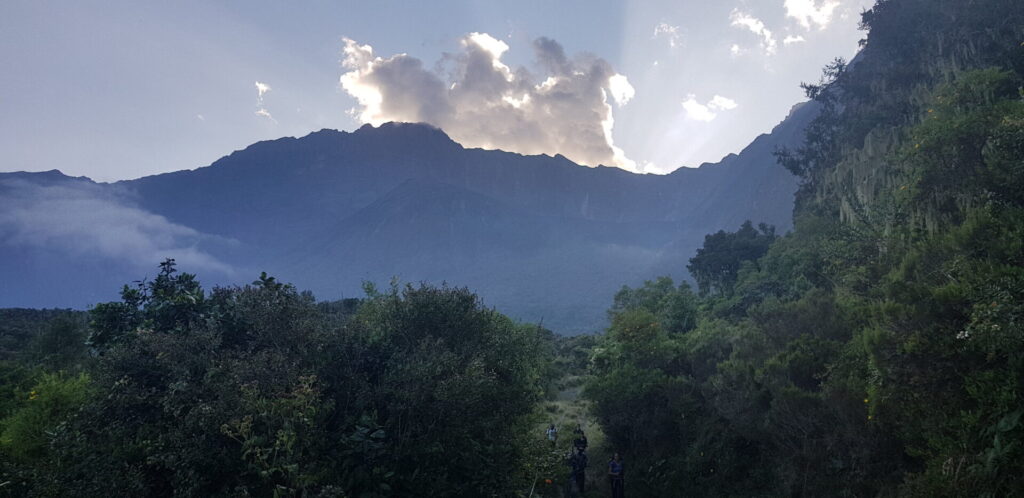
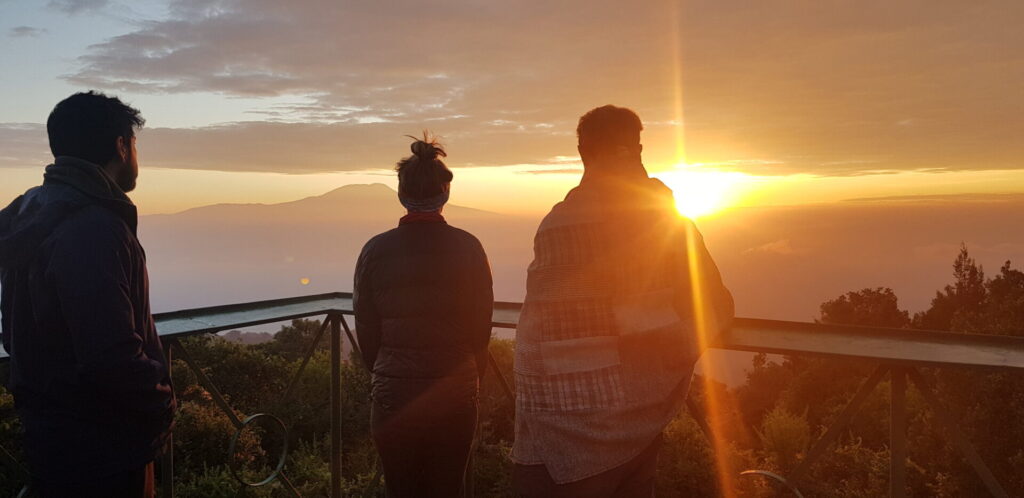
My symptoms worsened again with abdominal pain, spasms, a general sense of misery and a sneaking suspicion that a team of small gremlins were chewing on a compote of my vital organs and tying my bowel in knots
As you climb you move slowly through layers of montane forest – thick with mountain bamboo and Hagenia abyssinica hung with lichen. You can almost hear the sound of things growing. The main sounds I was aware of, however, were my own intestinal ructions. By the time we’d gained a hundred metres of trail I was dosed-up on antimalarial, analgesic, antispasmodic and antipyretic medicines, altitude sickness prophylaxis and oral rehydration therapy. I avoided unnecessary movements. Which was difficult on a four-day hiking trip.
I am not entirely unacquainted with bodily setbacks. When I was six-months-old my parents, who are both doctors, put me in a baby seat attached to their tandem bicycle and rode ten miles through snow to my Grandma’s house. By the time they arrived I was blue, floppy and unresponsive. They put me in the bathroom sink and gradually warmed me up.
Aged eleven, I developed osteomyelitis in my ankle and my mum and dad waited until I needed crutches to get around the shops and was so febrile and delirious I could barely locate my own toes. I spent a week in hospital; the only part of which I can remember was my last day footling around a miniature pool table dragging my IV drip behind me.
Prepare the child for the road, not the road for the child.
I struggled on, periodically disappearing behind bushes as surreptitiously as possible. I lay on my back on a flat boulder and saw all the leaves and branches of the canopy reaching out to the light. I attached myself to the tracks of Jackson and his gun, turned on an old Bob Dylan album and kept plodding forward until there came that condition of spirit and body where I know that whatever happens I will keep going.
Coming down Little Meru at the end of the following day the air was thick with dust. I wrapped a cotton scarf around my nose and mouth. It didn’t really work – my tongue and teeth were coated in fine red grit. Breaking into a canter on the descent I caught a loop of my right bootlace in the top metal lace stay of my left boot. The sudden entrapment almost flattened me but the forces involved were sufficient to rip the metal loop clean out of my leather boot. Which is just as well because I’m almost certain the alternative would have required a visit to a maxillofacial surgeon.
That night we snatched a few hours sleep at Saddle Hut, 3500m. I washed with a bowl of warm water crouched behind the toilet block and made my bag ready for the overnight climb to the summit. I thought I was making good preparations but Mirjam wasn’t happy.
“I’ve got no time for faffers!”
Sheepishly I blew my nose, and about half of Little Meru came out. After a few hours fitful sleep we awoke at midnight, swallowed a bowl of watery porridge and set out. Above us the moon was new but every star in the universe was out to light our way. The night was cold and clear but our bodies soon warmed with the effort of climbing. We walked into the Afroalpine zone, where plant life is sparse and we hiked on gravel and bare rock.
My symptoms worsened again with abdominal pain, spasms, a general sense of misery and a sneaking suspicion that a team of small gremlins were chewing on a compote of my vital organs and tying my bowel in knots. I pleaded with them to stop but they would not.
Taz was also having a hard time: above 4000m his breathing became laboured and he felt terribly exhausted so slackened his pace to make sure he could keep going to the top. Marina complained of a headache but apart from being unable to record a video for her friend’s wedding without looking like a crazy person was basically fine. Mirjam didn’t appear to break sweat.
Kaniki, a porter for a Swiss couple hiking with us, could see I was struggling. High-top suede desert boots, skinny jeans, wayfarer shades and Lingala music blaring out of his phone: Kaniki was the coolest guy on the mountain. He climbed Kilimanjaro several times a month and was learning the keyboard on his days off. He offered to carry my rucksack and after a brief scuffle with my pride and stubbornness I let him take it. This made things easier and I was able to look around me to the hulking black silhouette of Meru above us and register the shooting stars which flared through the sky from time to time.
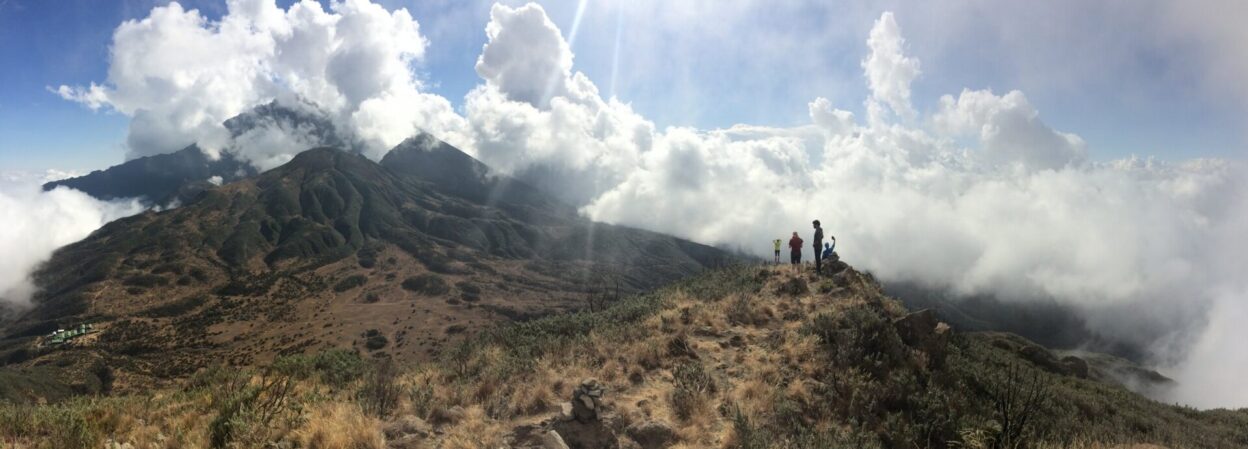
An attraction of wilderness, of self-willed land, is that you get to be self-willed too: chart your route, set your pace, rest when it is time. As the night wore on I found myself becoming increasingly irritated by our guide. The navigation was simple and apart from the small risk of trampling necessitating the supervision of an armed ranger, I could see no real reason why we had to be chaperoned at all. Tanzania is a poor country though, and I concede their right to prescribe conditions for entry to their national parks. Trekking brings revenue to rural areas where foreign currency seldom comes and provides jobs for porters, rangers and guides. But the world is a different place when you are ill, and this guy was pissing me off. His pace when walking was glacially slow and when we stopped and I wanted a moment to let my stomach settle he’d be on to me with tuende, tuende – let’s go, let’s go.
Eventually I put my foot down. “I need to lie here for five minutes.”
“We need to go! Tuende!”
“I disagree. Leave me alone.”
I can only imagine he thought: Who is this flatulent, pasty, morose git? And why on earth did these other nice people bring him along?
As with all these matters though, if you just keep going things will eventually improve or at least you’ll reach your destination. The first light of morning was lilac. From the ridge line we could see the snows of Kilimanjaro and Mawenzi Peak jut above the quilt of cloud smothering the plains. Then a band of burned orange peeped over the horizon and my disquiet left me all in one breath.
I reached the summit a little after sunrise, breathing hard in the thin air. Glad to have held on. Glad to be on that serrated knife-edge at the coming on of morning in as spectacular a place as East Africa contains. It took us the rest of that day and the following morning to return to Momella Gate. On the final morning, in a clearing beside the trail as we broke out of the forest, seven giraffes stood nibbling on bushes. They were tranquil and we walked within ten metres without their seeming at all ruffled. Spotted all over with tan blotches and legs so long they might be wearing stilts, giraffes manage to be both elegant and goofy. To me, the expression on their face read both ‘what the heck am I doing up here’ and ‘this acacia tree is delicious’.
Back at Project House the water system was still down but I didn’t mind. I knelt beside the pool and toppled backwards into the water. The dust washed out.
Adam Boggon is a Scottish doctor based in London. He’s written for The Great Outdoors, Like The Wind and Singletrack and was shortlisted for the John Byrne Award and for ‘Best Author’ by Singletrack Magazine in 2020. You can read more of his published pieces here: www.adamboggon.co.uk
Don’t miss a single adventure
Sign up to our free newsletter and get a weekly BASE hit to your inbox
You might also like
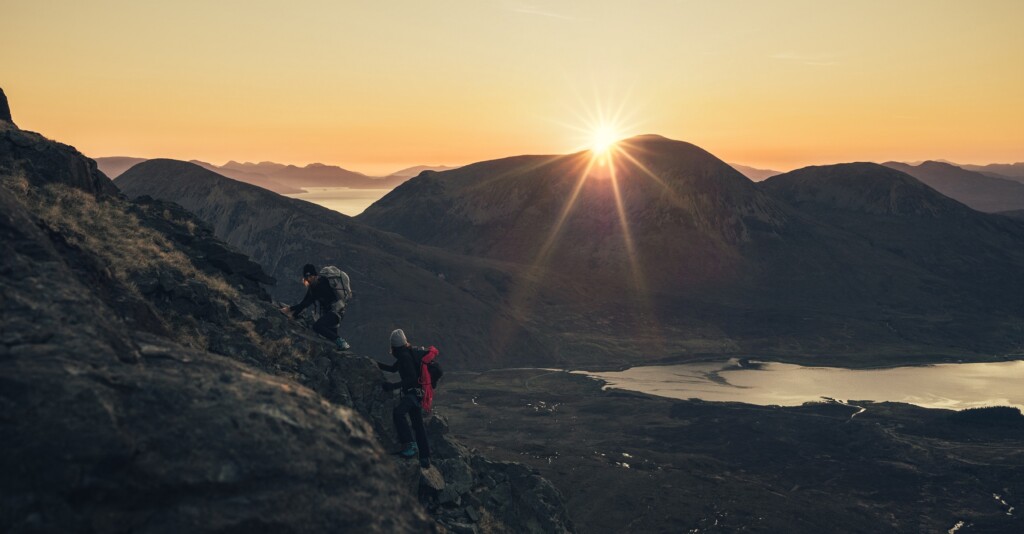
Story • Kieran Creevy • Jun 16, 2023
Scrambling Before Scran on Scotland’s Misty Isle
Sun-drenched ridge lines with expedition chef Kieran Creevy on the Isle of Skye
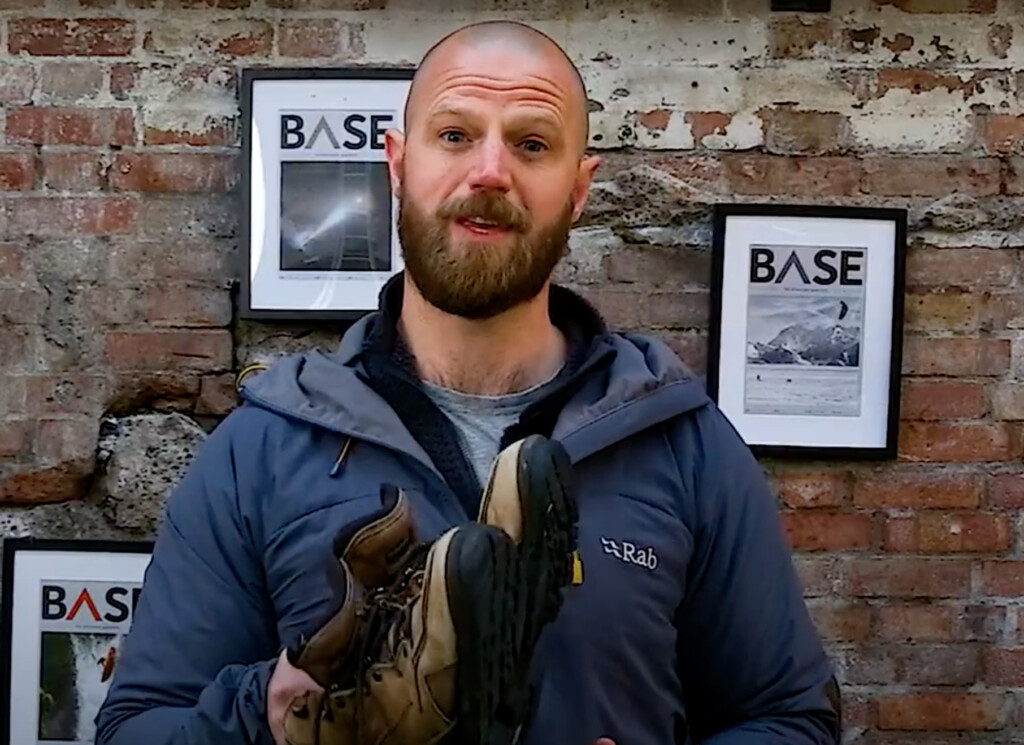
Video • BASE editorial team • Jun 02, 2023
How To Clean And Care For Hiking Boots
Our top five tips to give your hiking boots a 'glow up'
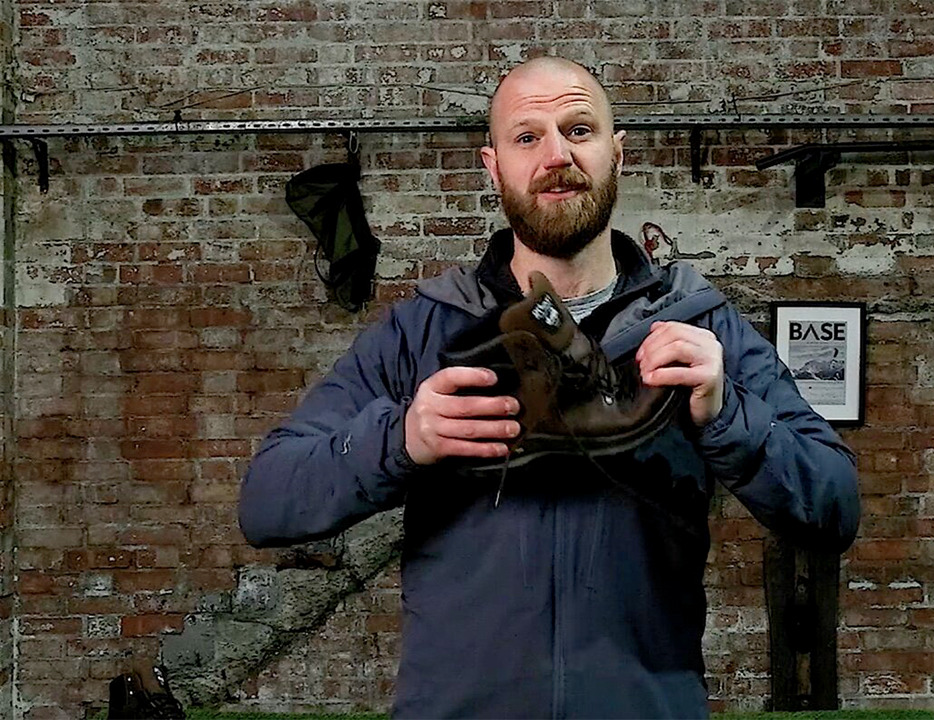
Video • BASE editorial team • Mar 30, 2023
How To Break In Leather Walking Boots
5 fast hacks for breaking in your boots, beating the blisters and reducing the ankle rub
